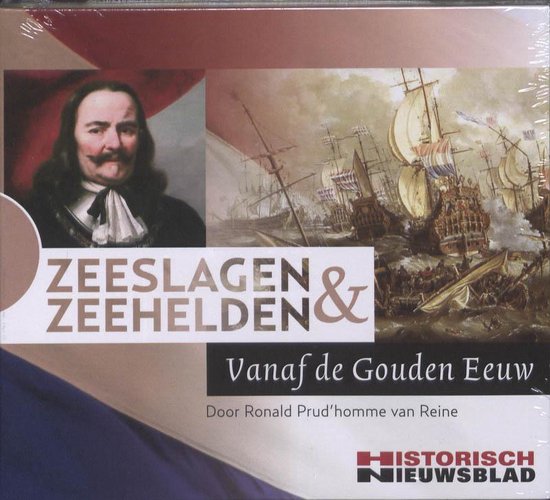
Military History of the Netherlands - The Eighty Years War
This book descirbes the military factors underlying the division of the Low Countries and the creation of the Dutch Republic in the 17th century.
The Eighty Years War explores the military puzzle of the Dutch Republic. When a revolt broke out in the Low Countries against the rule of the King of Spain, no one could foresee that it would ultimately lead to the partition of the provinces.
Only the northern provinces succeeded in holding their own militarily. They formed an independent republic that was increasingly able to withstand the might of Spain. How did they do it? To answer that question this study examines the operations of the insurgents’ army and navy against the military power of the King. From the struggle for survival of the Beggars under William of Orange to the resounding victories at Nieuwpoort under Maurits and the Downs under Tromp, all these confrontations on land and at sea are discussed as a coherent whole in this, the first integrated military history of the Eighty Years War.
In theme-based chapters, it looks at the tactical military revolution in the army and navy, the weaponry, the methods of recruitment, the organisation and financing of the armed forces, and the always tense relationship between the soldiers and seamen on one hand and the civilian population on the other. Numerous illustrations, many of them rarely seen, help to bring this past to life.
This examination of the birth of the Dutch state from a military perspective is the first in a six-volume series on the military history of the Netherlands.
Petra Groen (lead editor) is a senior researcher at the Netherlands Institute of Military History. For many years she was also professor of military history at Leiden University.
Olaf van Nimwegen is a research affiliate at Utrecht University. He is an expert in the field of Dutch military history from 1500 to ca. 1800. Ronald Prud’homme van Reine is a maritime historian and independent researcher. He has written several biographies of leading figures in Dutch naval history.
Louis Sicking is the Aemilius Papinianus professor of the History of Public International Law at VU Amsterdam and lectures in medieval and early modern history at Leiden University. His research is predominantly in the field of the maritime history of the Low Countries in the fifteenth and sixteenth centuries.
Adri van Vliet is deputy director of the Netherlands Institute of Military History. He specialises in the maritime history of the Netherlands in the sixteenth and seventeenth centuries.
Translated by Andy Brown, Helen Bannatyne & Annette Mills
"An excellent account of an important episode in military history and in the development of Europe. Takes forward existing work on the war. The use of images is particularly valuable."
− Jeremy Black, professor of history at the University of Exeter.
The Eighty Years War explores the military puzzle of the Dutch Republic. When a revolt broke out in the Low Countries against the rule of the King of Spain, no one could foresee that it would ultimately lead to the partition of the provinces.
Only the northern provinces succeeded in holding their own militarily. They formed an independent republic that was increasingly able to withstand the might of Spain. How did they do it? To answer that question this study examines the operations of the insurgents’ army and navy against the military power of the King. From the struggle for survival of the Beggars under William of Orange to the resounding victories at Nieuwpoort under Maurits and the Downs under Tromp, all these confrontations on land and at sea are discussed as a coherent whole in this, the first integrated military history of the Eighty Years War.
In theme-based chapters, it looks at the tactical military revolution in the army and navy, the weaponry, the methods of recruitment, the organisation and financing of the armed forces, and the always tense relationship between the soldiers and seamen on one hand and the civilian population on the other. Numerous illustrations, many of them rarely seen, help to bring this past to life.
This examination of the birth of the Dutch state from a military perspective is the first in a six-volume series on the military history of the Netherlands.
Petra Groen (lead editor) is a senior researcher at the Netherlands Institute of Military History. For many years she was also professor of military history at Leiden University.
Olaf van Nimwegen is a research affiliate at Utrecht University. He is an expert in the field of Dutch military history from 1500 to ca. 1800. Ronald Prud’homme van Reine is a maritime historian and independent researcher. He has written several biographies of leading figures in Dutch naval history.
Louis Sicking is the Aemilius Papinianus professor of the History of Public International Law at VU Amsterdam and lectures in medieval and early modern history at Leiden University. His research is predominantly in the field of the maritime history of the Low Countries in the fifteenth and sixteenth centuries.
Adri van Vliet is deputy director of the Netherlands Institute of Military History. He specialises in the maritime history of the Netherlands in the sixteenth and seventeenth centuries.
Translated by Andy Brown, Helen Bannatyne & Annette Mills
"An excellent account of an important episode in military history and in the development of Europe. Takes forward existing work on the war. The use of images is particularly valuable."
− Jeremy Black, professor of history at the University of Exeter.
| Auteur | | Olaf van Nimwegen |
| Taal | | Engels |
| Type | | Hardcover |
| Categorie | | Geschiedenis |





